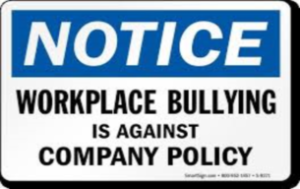March 15th, 2017
Toxic Talent: Why High-Performing Jerks Aren’t Worth the Trouble
Harrison Reed, PA-C
Susan Fowler’s first day on the job did not go well. She had just joined the ride share company Uber as an engineer in late 2015 when the messages arrived. Hours into her first official assignment, Susan’s new manager contacted her over the company’s communication system to ask for sex.
Susan was so struck by the audacious advances that she saved screenshots of the conversation and reported her supervisor to the human resources department. Expecting swift punishment for her boss, Susan was shocked when Uber’s upper management came to his defense. It was his first offense, they argued, according to Susan’s account of the events, and he was “a high performer,” a status warranting leniency. The abuser kept his job while Susan found a different team.
Last month, Susan’s online description of her experiences at Uber set off a firestorm for the transportation company. But while sexual harassment is one of the more troubling (and illegal) forms of workplace abuse, it is far from the most common. More subtle offenses often fly far below the legal radar and rarely grab similar headlines. But, as in Susan’s experience, organizations often absolve abusers they view as talented or highly productive.
The healthcare industry is certainly no stranger to toxic work culture. Surveys of healthcare executives indicate that the vast majority of healthcare workers experience, witness, and/or report destructive behavior on a regular basis. These attacks often flow down a perceived power gradient when more powerful employees bully their less-influential colleagues. Punishment for this behavior follows the same lopsided rule, as prominent employees are likely to avoid punishment for the same offenses that would have “lower-ranking” colleagues fired.
 Perpetrators of toxic behavior rarely reveal themselves in a single, explosive episode but choose more subtle tactics that, over time, erode the morale of their targets. These include degrading comments, public humiliation, destructive criticism, sarcastic insults, work disruption, and team sabotage. The consequences of these actions can ripple through an entire organization as the victims themselves adopt similar aggressive tendencies for protection.
Perpetrators of toxic behavior rarely reveal themselves in a single, explosive episode but choose more subtle tactics that, over time, erode the morale of their targets. These include degrading comments, public humiliation, destructive criticism, sarcastic insults, work disruption, and team sabotage. The consequences of these actions can ripple through an entire organization as the victims themselves adopt similar aggressive tendencies for protection.
A single jerk can cause staggering damage. Direct victims of workplace abuse—or even those who merely witness such behavior—are far more likely to skip work, call in sick, or take vacation. When they do show up, victims are less invested in their work and productivity drops. Ultimately, employees who deal with abuse on a regular basis do what any reasonable person would do: they quit.
The estimated cost of replacing employees ranges between 1.5 and 2.5 times their annual salaries. Toxicity from the most prolific surgeon or productive administrator can easily rack up a debt that surpasses any profit he may bring. If five or six coworkers are driven to find new employment by the behavior of such a person, the cost of rebuilding a team could reach into the millions of dollars.
Of course, the true cost of an abusive workplace is never limited to a few resignations. Well-intentioned employees waste countless work hours running interference and buffering jerks. A nurse once told me that she expects to receive fewer orders for her patients when certain administrators are in the building since medical providers are likely to be occupied appeasing an inflated ego. Mistakes made under abusive supervisors are less likely to be reported for fear of punishment, and thus systemic errors are less likely to be caught and corrected. Employees in these settings are reluctant to perform tasks “above and beyond” their duties in favor of maintaining a low profile. Entire workforces can disappear into defensive foxholes.
It should come as no surprise, then, that hospitals peppered with toxic jerks are also linked to lower patient satisfaction. Far more disturbing, some studies have connected a negative workplace culture to increased patient mortality, a prospect that should have hospitals shoving bullies out of their doors with bulldozers.
Organizations claiming to value evidence-based methods must face the hypocrisy of harboring jerks. With so much evidence of such widespread harm, anything less than a zero-tolerance policy toward toxic behavior and workplace bullying defies science and reason. Rooting out poisonous personalities is, no doubt, an unpleasant experience, but it is one that offers both immediate and long-lasting rewards.
Much like the dawn of the “Moneyball” era in professional baseball, healthcare organizations must rethink the basic assumptions of team building. Talented jerks—even superstars—don’t bring a financial advantage; they destroy it. Administrators wishing to build the most effective organization at the most affordable cost should prioritize intangibles such as temperament and teamwork far above marginal differences in experience or productivity.
Of course, workplaces aren’t just filled with accounting spreadsheets. Whether it is employees or the patients for whom they care, toxic cultures do incalculable damage to real human beings. If healthcare leaders are to claim the dual responsibilities of running business and saving lives, they must make a healthy work environment a top priority.
Categories: Policy, Uncategorized, Work-Life Balance
Tags: healthcare industry, toxic work culture, workplace bullying, workplace harassment
You can follow any responses to this entry through the RSS 2.0 feed. Both comments and pings are currently closed.
7 Responses to “Toxic Talent: Why High-Performing Jerks Aren’t Worth the Trouble”

NP/PA Bloggers
Elizabeth Donahue, RN, MSN, NP‑C
Alexandra Godfrey, BSc PT, MS PA‑C
Emily F. Moore, RN, MSN, CPNP‑PC, CCRN
Advanced practice clinicians treating patients in a variety of settings and specialties
Learn more about In Practice: Reflections from NPs and PAs.
-
 NEJM Journal Watch — Recent General Medicine Articles
NEJM Journal Watch — Recent General Medicine Articles NEJM Journal Watch — Recent Pediatrics and Adolescent Medicine Articles
NEJM Journal Watch — Recent Pediatrics and Adolescent Medicine Articles-
Tag Cloud
- addiction adolescent health advanced practice provider clinical role Communication compensation deep brain stimulation diagnostic test discrimination Emergency Medicine empathy end of life Falls Geriatrics gun violence Haiti healthcare access health care quality humanity intensive care intracranial aneurysm legislation lifestyle modification longterm care Massachusetts medical knowledge negotiation neurosurgery NPAEP obesity opioid abuse Parkinson's disease patient-provider communication patient navigation pediatrics performance personal growth practice privileges primary care professional title retirement running team-based health care toxic work culture Vaccination



Well Stated!
I am proud of your vision and ability to interpret!
We are egotistical beings…scrambling up the food chain for recognition and advantage…varying morals and levels of integrity, which “cannot be legislated”.
Some favor a quick palm to the eyes, to borrow from a boxing analogy, others
make their indiscretions appear sooo very double entendre’…none are perfect!
The “bottom line” is this: YOU REPRESENT THE BEST LIFE HAS TO OFFER.
Nobody escapes the flaws in humanity; we, who for varying reasons have chosen a “Care-giver” lifestyle, remain flawed, money-grubbing human-beings on our worst days within this clay-vessel. Stay focused! I am proud of you.
Ken Henry, P.A.-C.
Yes, unfortunately physician (and other disciplines as well) rudeness, unprofessional, and disruptive behaviors continue to negatively impact care relationships that adversely affect patient outcomes of care. The problems are accentuated by the growing complexity, intrusion, and accountability for health care performance, leading to increasing levels of stress and burnout that negatively impact physician attitudes and behaviors toward health care delivery. But instead of scolding our physcians we need to work collaboratively with them to gain a better understanding of their issues and concerns and provide the necessary logistical and behavioral support services to help them better adjust and thrive in today’s high pressure health care environment.
Medical institutions are among the last professionally skilled worker environments where a blind eye is turned to toxic culture – and toxic superstars (and some who aren’t so super). So glad to see this being discussed in terms of organizational development. It’s long overdue!
I suspect there is room for the dimension “feminist ecology” here. This does NOT mean females are better or even unique – but this concept refers to the idea that androgenous ecological views are unit dominated, individual performance related, and achievement focused. “Feminist” views are network focused, TEAM outcome focused, and process focused (we did our best rather than we killed the other team). You can see this in bees vs. polar bears: killer whales (hunting as a pack) versus sharks (lone scavengers) and in various medical “teams”. ‘High performing jerks’ stick out as such in the wrong environment – otherwise they appear as talented idiosyncratic geniuses (that no body wants to work with).
What can we do to re-train the toxic jerks? Should people identified as bullies or toxic jerks automatically be banned from hospital staffs?Yes, they cause a lot of damage, but it doesn’t make sense to train a person through medical school, residency, and often fellowship, and then push them out the door and discard them because they are not nice people. There is a tremendous societal cost for that approach, also. All the huge ranks of behavioral scientists ought to be able to figure this one out.
Research has proven that medical school selection skills are not up to this challenge. Peers voting them off the island at second year would help the rest of the world a lot.. . . but will this ever happen?
Thanks for a wonderful article. It is so heartening to see a man write this, and take up the cudgels against gender prejudice. When I was a medical student doing clinical rotations in Baltimore 1973-75, I suffered greatly from sexual harassment on several rotations. The chiefs of service were definitely part of the problem. Over 40 years later, though I am a successful neuropsychiatrist, I still have the emotional scars. I left that atmosphere as soon as I could, and have been practicing in a different state for over 20 years.